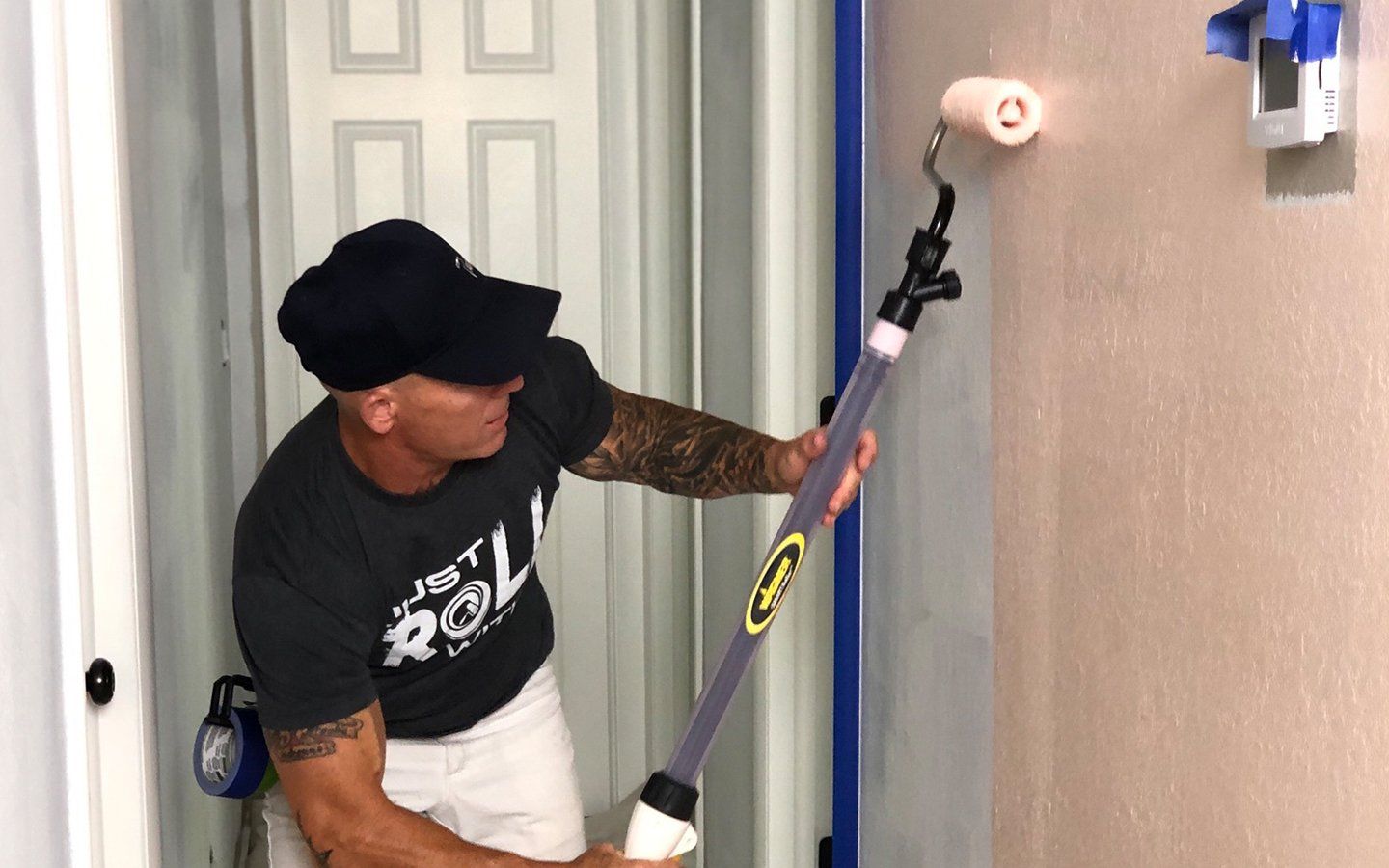Innovation in painting tools will probably never end in the commercial painting industry;
Anything from brushes, to rollers, to sprayers and onward. Any product that can be used to save time and/or increase quality is a worthwhile addition to a painter’s toolkit. Unfortunately, with the Wagner Smart Roller, these traits are lacking.
For this review I am using the base model of the Wagner Smart roller that I purchased from my local hardware store for $25.99. The roller itself works as advertised, but it not clear whether its a professional or DIY tool. It has a long tube that can be manually filled with paint and then pushed out through the perforated roller cover so you don’t have to keep visiting your paint tray to reload. That being said, this model does still have a few practical issues in its use.
To start, it has a much longer preparation time than the standard paint roller. It must be assembled before use, which is pretty simple if you follow the directions, although still much longer than your standard paint roller. I also found that to get the roller cover fully loaded you have to use nearly the full capacity of the paint tube, meaning you will undoubtedly have a delayed start when using the smart roller. Similarly, when you are finished with your job there is an added cleanup time to ensure that your Smart Roller doesn’t get clogged before the next time you go to use it. The recommend lube, a nasty petroleum jelly, to keep the roller running properly is extremely messy and very difficult to remove from your hands. This was the worst part of the entire experience
I used the Smart Roller to paint a hallway and found that it was very tricky to hit the entire surface of the wall due to the long plunger coming out of the back of the tube. The length of the roller means that unless you have a large open space, you will likely be hitting the floor and ceiling if you are trying to roll and lay out your paint vertically. I was able to get around this by rolling horizontally in the portions I couldn’t reach but there is no way to decrease the length of the roller as it is a symptom of its core function. Another issue that this design leads to is the product is much heavier than a normal paint roller as you are literally carrying a loaded tube of paint through your project. For any larger project, you will have to end up taking more breaks and the product will take a larger physical toll on you than a standard roller. Hopefully you are fit enough to use this device.
These problems on their own aren’t terrible, but the real issues start when the issues combine. The added preparation and cleanup that this product adds means it will be less efficient for smaller projects where you won’t cut down as much painting time. And the added weight of the roller makes it harder to endure large projects that make the preparation and cleanup time worthwhile. The device simply does not work in hallways or closets. I would not generally recommend this product to any professionals nor many Do-it-yourselfers, however if you have a mid-sized project with a lot of open space, or if you want to combine your workouts with your projects, then this product could save you some time.
if you are looking for a professional version of an inner feed roller that truly saves time and makes a professional painter money, I would recommend the Titan Inner Feed Roller Kit (https://paintlifesupply.com/products/inner-feed-roller-kit?_pos=4&_sid=7cfc36727&_ss=r) available on PaintLifeSupply.com.
I used the Smart Roller to paint a hallway and found that it was very tricky to hit the entire surface of the wall due to the long plunger coming out of the back of the tube.
Chris Berry - The Idaho Painter




